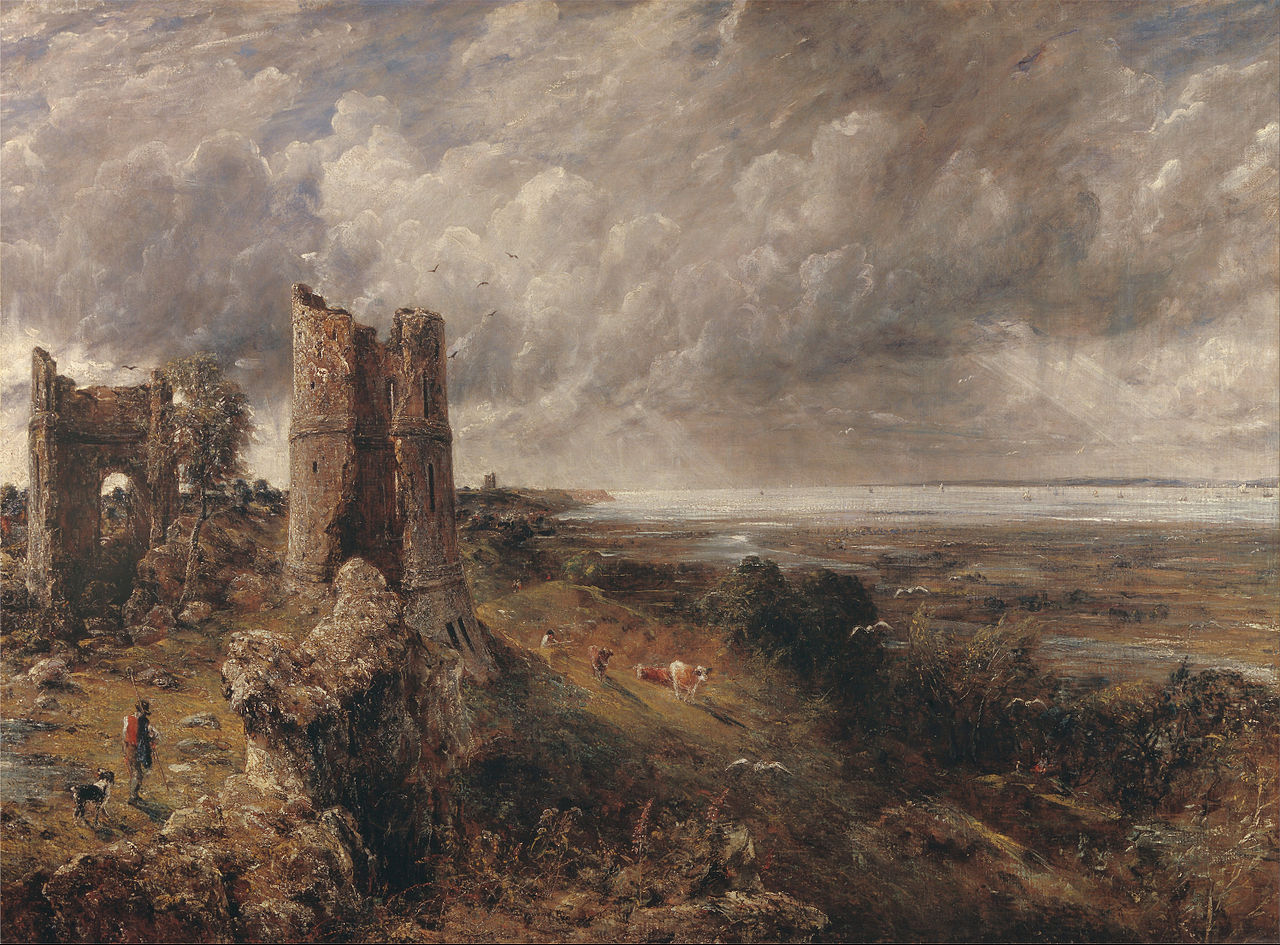Hadleigh Castle is an oil painting by the English artist John Constable (1776–1837), exhibited at the Royal Academy exhibition in 1829.[1]
Constable visited Hadleigh Castle in Essex only once, in 1814, when he made a small pencil drawing which he subsequently developed into a full-sized oil sketch, probably about fifteen years later. The sketch is in the collection of the Tate Gallery, London, and the completed painting is part of the Paul Mellon Collection at the Yale Center for British Art.[1]
According to the art historians Tammis Groft and Mary Mackay, the painting shows Hadleigh Castle as a decaying man-made structure succumbing to the elemental power of nature,[2] an “ode to melancholy and ruin”.[3][a]Constable’s wife, Maria, had died in 1827, leaving him with seven young children.[3] Other critics were perplexed by Constable’s brushwork, which combined with his use of the palette knife created a surface texture resembling chopped hay and whitewash.[3]
Notes
| a | Constable’s wife, Maria, had died in 1827, leaving him with seven young children.[3] |
|---|

